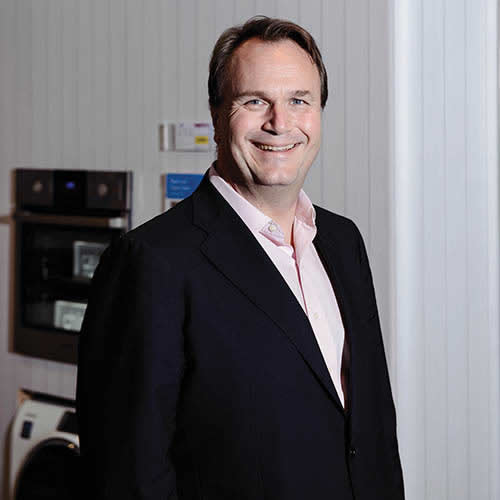Electricals drove growth for the Dixons Carphone Group, while its mobile phones business struggled in the first half of 2017.
The latest results for the 26 weeks ended October 28, showed seven per cent like-for-like growth in electricals, with the group seeing growth across all markets as well as market share gains.
In the UK and Ireland, Dixons saw six per cent like-for-like growth in electricals, with around four per cent of this benefiting from sales transferred from closed stores.
However, overall revenue in the UK and Ireland fell by two per cent to £3 billion, with like-for-like revenue up two per cent.
In Currys PC World, white-goods performance remained strong, which the group said was supported by its next-day delivery proposition.
However, the group was negatively impacted by its mobile business in the UK and Ireland, reporting a three per cent fall in like-for-like revenues.
The group also announced that it has launched its same day delivery offer throughout the UK.
Overall, group revenue increased by one per cent on a local currency basis and four per cent on a like-for-like revenue basis to £4.86 billion.
This growth was mainly driven by strong performance in the Nordics and Greece, which saw an eight per cent and seven per cent like-for-like revenue growth respectively.
Dixons saw headline profits before tax of £61m, down on the £154 million seen in 2016/17, because of a negative £58m impact year-on-year from a change in receivables revaluations and insurance contract terms.
The group also confirmed that it saw a “good start” to peak trading with a record Black Friday in all regions, but added that it saw a more spread-out event.
Group chief executive Sebastian James (pictured) said: “Our interim results highlight the continuation of trends that we saw in our Q1 trading update. Overall we have delivered strong free cash flow, expect to deliver full-year PBT within the £360m to £400m range and the board intends to maintain the full-year dividend.
“I am encouraged by the continued achievements in our electricals businesses across the group with like-for-like sales up seven per cent and growth in revenues, market share, customer satisfaction and profitability in these markets thanks to our commitment to retail innovation and to serving customers well. As we said in August, the UK post-pay mobile phone market is tougher, with a combination of higher handset costs and relatively incremental technology growth continuing to cause customers to hold on to their handsets for longer and some to choose a SIM-only contract in the meantime. In addition, the later launch of the iPhone X pushed some sales into the second half of our financial year. Throughout the period, we made a very conscious decision to fight hard to drive sales in our product offering, and this has impacted mobile profitability. Vitally, though, these actions have helped maintain scale, reinforce our position as market leader, and ensure our relevance to the customer.
“We recognise that the performance of the mobile division needs addressing, and are taking action to adapt our model in order to cement our place in a changing world. We will update the market on these developments in due course, but we believe that we can, over time, reduce the complexity and capital intensity of our mobile business model, and increase the simplicity and profitability of what we do.

“The start to peak trading has gone well with sales records being broken in all territories. Everywhere, we have seen material share gain and this shows that our retail businesses continue to be able to entice customers into buying the amazing new technologies that we offer. We must remember, though, that there is plenty of peak left to go.”
Commenting on the results, Eleanor Parr, retail analyst at GlobalData, said: “Despite Dixons Carphone H1 2017/18 UK and Ireland sales falling two per cent on last year to £3bn and headline profits tumbling, its share price has shown a positive reaction, thanks to the retailer’s promise to adapt its smartphone business model in an attempt to stall falling revenue. The retailer highlighted that its weak performance in the UK and Ireland has been primarily driven by its mobile sector, which saw like-for-like sales decline three per cent. Though sales were impacted by a later release of the iPhone X, which fell outside of its reporting period for H1, the trend of shoppers updating phones less often due to higher prices and declining real income, which led Dixons Carphone to announce a profit warning in August 2017, has continued.
“With the retailer’s profits set to fall this year, Dixons Carphone will inevitably be forced to partake in cost-cutting measures over the coming months. As its store portfolio is already extensive, it may choose to close underperforming shops, most likely struggling Carphone Warehouse outlets, which are often located close to its three-in-one store concepts.
“Dixons Carphone shares have halved in value over the past year and its market capitalisation is now only marginally higher than it was when it announced the merger with Carphone Warehouse in May 2014 (£1.9bn then, in a merger to create a £3.8bn company). The retailer’s commitment to adapting its selling model announced this morning has been perceived as an encouraging sign by the City. H2 will be a crucial trading period for Dixons Carphone and it will need to deliver on these promises in order to restore the confidence of its shareholders in the long term.
“Despite challenging profits, the retailer has seen its electrical division over perform and gain share in a highly competitive market, with revenue rising six per cent like-for-like versus last year. Its record-breaking Black Friday will contribute to continued growth in H2 although heavy discounting is likely to further erode profits.”


